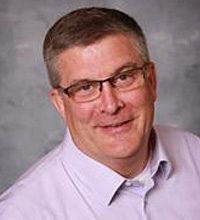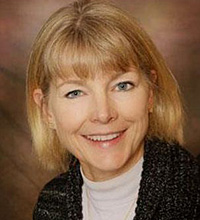Next Generation Leadership: Learning from the past and preparing for the future
The past:
When I was young, I waited every morning with great anticipation for my Dad to take me to Grandpa’s farm. We would spend long days caring for animals and working in the fields. The tractors didn’t have cabs and the best you might hope for was a fender-mounted umbrella to break the hot sun. In those days, machinery was small and we spent days planting a field that today can be done in hours. We were always busy and always “in the trenches” doing manual labor. “Watching our weight” was not a concern which was good as Grandma was a great cook. (Homemade pies every day!)
In the ‘50’s, it was feasible to support multiple families farming small acreages and raising animals. Families were frugal and profits were reinvested in the business. Family members were expected to wear clothes multiple times before they were “really” dirty. Hand-me-downs were a way of life. Dress hats were in a box that was reserved for church, weddings, and funerals. Work boots were re-soled before they were replaced. This generation was the generation of survivors of the “Great Depression.” Grandpa had a work ethic second to none, and it allowed him to become financially successful.
When Dad left Grandpa’s farm to start on his own, he took with him his Dad’s work ethic but he knew that hard work alone was not going to make him successful. In the evening, when work outside was done, Dad would be in his recliner studying books on business, agronomy, marketing, and electrical wiring. He was constantly educating himself to be smarter than the guy down the road and kept himself positioned to capitalize on an opportunity when it presented itself. Using this approach, he was able to grow the family business.
The scenario above relates to the reality of change in leading the traditional family farm and is as global as the local grocer being replaced by today’s giant chain stores. The myth that “hard work will make your business successful” is replaced by the reality that today’s business leaders must approach leadership with multidimensional knowledge and skills.
The future:
As we look at the “next generation” of business owners, what myths of the past might have long-term value and what new challenges will be a part of their new reality? What changes have occurred that will act as barriers to the next generation trying to survive in the volatile world of business? How prepared will they be for change when it occurs?
Without question, the financial capital needed to stay in the game far exceeds what any recent generation has needed. Equipment costs and real estate values have exploded while profit margins have not always kept pace. Real estate taxes continue to escalate as land and real estate owners keep pressure on businesses to maintain annual lease rates equating to a “reasonable return” for their family. Businesses able to drive down their cost of production, professionally manage risk, and differentiate themselves will survive while their peers who cling to the past practices of hard work and a belief that the market will take care of them will suffer. The myth of relying on personal knowledge and experience will be replaced by information driven decisions. The resources available to today’s business leaders are staggering. Information can be found in moments and from multiple sources. Leaders have advisors that can help them sort through the data to retain what is relevant to their business.
With the increase in size of operations, businesses will need to become better leaders and managers of people than ever before. It will be critical for leaders to design and communicate an inspiring, shared vision to their team and their stakeholders. The best teams will have a professional, fully-engaged “talent bench” possessing a commitment to their mission and a passion for the industry. High potential team members will be incented to stretch and be fairly rewarded for superior performance. The best leaders will attract, train, and retain top talent. They will be laser-focused on becoming the “employer of choice” and finding creative ways to keep team members fully engaged.
In the past, businesses occasionally negotiated with their vendors on a local basis. Today’s large business leader negotiates with hundreds of contract suppliers, consumer groups, real estate owners, and “big box” retail outlets. To maintain a competitive advantage, they are strategic negotiators using collaborative techniques to design durable agreements. The myth of simply being the best bluffer may still work in poker but not in today’s business world.
With respect to governance, in Grandpa’s day, he simply gave orders each morning and all executed his directives. The business was dependent on his wisdom and experience for direction and sustainability. Historically, leaders could operate their business as a solo act and they had room to make some mistakes. The margins of today do not always tolerate many bad calls. The costs of production do not leave room on the bottom line for poor work ethic or poor judgment. Our litigious society encourages expensive law suits that consume valuable time and resources. The complexity of today’s business demands the collaboration of multiple parties designing and implementing the best strategies to manage risk and protect margins. The myth of family members leading the company is replaced by the reality of nonfamily members running the business. Future businesses will likely have some form of “board governance” made up of experts that bring unique value to the table and assist in designing policy and providing direction. Back in the day, only family members were allowed in the board room. Today, the board will further leverage their decision-making by engaging outside professionals and specialists to enhance the knowledge base and interpret “big data” flooding the airwaves.
Businesses will collaborate with other stakeholders to take advantage of human capital, equipment, suppliers, and other resources that mutually benefit the business. Leaders will invest in their people and make sure they are fluent in the latest technology and innovations that support the business. Leaders will be bi-lingual and prepared to communicate with a diverse team.
Leaders will be connected to their community and the elected officials that impact the business. They will be involved in industry organizations and help influence public policy. The “sandbox” for future leaders will be global. They will have access to information impacting their businesses from experts around the world. Leaders will invest in their communities and be perceived as an asset rather than a threat. The myth of “doing it Grandpa’s way” is replaced by doing it the way the consumer is willing to accept. Business leaders will develop “Performance Dashboards” for their teams that will act as the lighthouse to measure performance and drive results. Leaders will set forth attainable goals and strategic imperatives that inspire and engage team members.
Future business models will provide for flexibility and be nimble enough to respond to consumer demand and anticipate the next news story that will affect demand. The job of educating consumers will be ongoing. Recognizing that today’s consumers have choices and are willing to pay for what they want may alter the reality of how decisions are made. Business owners will need to align with market demand to remain competitive.
The professionals:
Tomorrow’s professionals will embrace the past and learn from their predecessors. They will also distinguish the myths of the past and discern the realities of today necessary to thrive. This will require a broader lens and a forward-looking leadership style. Successful leaders will not be able to function on an island and risk developing a “false sense” of being the best at what they do.
While we should respect the hard workers and smart managers of the past and appreciate them for what they taught us, challenges on the horizon will require future leaders to lead their team professionally, anticipate change, and capitalize on opportunities as they evolve.
About the contributors:
 Al Bennett is a principal business consultant with AgStar Financial Services, ACA. AgStar provides succession and business planning, retirement and estate planning, financial management, human resources development and other services to the private agri-business sector. Al farmed for twenty-three years and was president of Bennett Farms, Inc. a corn and soybean operation in southern Minnesota, until January 2001. He can be reached at al.bennett@agstar.com
Al Bennett is a principal business consultant with AgStar Financial Services, ACA. AgStar provides succession and business planning, retirement and estate planning, financial management, human resources development and other services to the private agri-business sector. Al farmed for twenty-three years and was president of Bennett Farms, Inc. a corn and soybean operation in southern Minnesota, until January 2001. He can be reached at al.bennett@agstar.com
 Cathy Olson, CFBA, is a senior business consultant with AgStar Financial Services, ACA with an emphasis on transition planning. Cathy has more than 25 years of experience working in agriculture, including seven years working with a swine management company. She can be reached at Cathy.Olson@AgStar.com
Cathy Olson, CFBA, is a senior business consultant with AgStar Financial Services, ACA with an emphasis on transition planning. Cathy has more than 25 years of experience working in agriculture, including seven years working with a swine management company. She can be reached at Cathy.Olson@AgStar.com




